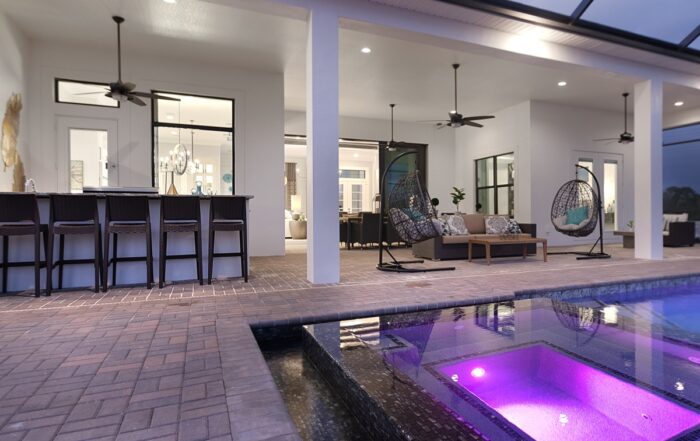
Having a drop zone in your home can be highly advantageous when it comes to keeping your interior organized and clutter-free. Drop zones can be designed in various ways, but are often found in entryways, laundry rooms, or increasingly popular mudrooms.
When selecting your LifeStyle home plan or designing your custom LifeStyle home, we encourage you to think about the importance of a drop zone and how it’ll be utilized in your daily life. Here are some questions to ask yourself.
How can you benefit from a drop zone?
Overall, a well-designed drop zone can be a practical and aesthetically pleasing addition to any home, providing a range of benefits to homeowners. It can aid in organization, clutter reduction, saving time, and stress reduction. A drop zone provides a designated spot for items like keys, wallets, bags, backpacks, shoes, and other daily essentials. By having a dedicated space for these items, it becomes easier to find what you need when leaving the house, reducing the chance of misplacing things.
In addition, a drop zone can act as a barrier to dirt and debris from outside. It helps prevent shoes from being scattered throughout the home, which can help protect your floors and furniture from unnecessary wear and tear.
Where in your home does a drop zone make most sense?
Drop zones can be designed in various ways, and in various rooms of the home. A mudroom, for example, can be an excellent place for a drop zone, especially if it’s near an entrance or the garage.
Remember, the type of drop zone you choose will depend on your family’s lifestyle, the available space, and the specific items you want to store and organize. Customizing the drop zone to your needs will make it more functional and efficient in keeping your home tidy and clutter-free.
What should your drop zone include?
After determining what area of your home makes most sense for a drop zone, start assessing your needs. For example, analyze the items that need to be stored in the drop zone. Common items include coats, bags, shoes, keys, umbrellas, mail, and other daily essentials. Based on these needs, decide on the type of storage solutions required, such as hooks, shelves, cubbies, cabinets, drawers, and baskets. Decide if you need to incorporate seating to provide a comfortable place to sit while putting on or taking off shoes. And don’t overlook wall space. You can use wall space to create a message center with chalkboard or whiteboard, or to add hooks or wall-mounted storage solutions.
What’s trending in mudroom/drop zone design?
As said, mudrooms are becoming a more and more popular drop zone area. In fact, they’re evolving into multipurpose spaces that can also serve as a laundry room, pet care area, home office, or even a mini pantry. And within these spaces, trends now include:
- Ample storage solutions. Custom built-in cabinets, cubbies, and shelves are in high demand. Homeowners want plenty of storage options to keep everything from shoes and backpacks to sports equipment and cleaning supplies organized.
- Benches and seating. Including built-in benches or standalone seating options in the mudroom is a popular trend. It provides a convenient spot for family members to sit while putting on or taking off shoes.
- Durable flooring. Mudrooms endure heavy foot traffic and exposure to the elements. Durable and easy-to-clean flooring materials such as tile or luxury vinyl are trendy choices.
- Hooks and hangers. Wall-mounted hooks, hangers, and pegs remain popular for hanging umbrellas, bags, and accessories. They are practical and help keep the floor space clutter-free.
- Pet-friendly features. For families with pets, mudrooms are being designed with pet-friendly features like built-in pet beds, feeding stations, and storage for pet essentials.
- Technology. Some mudrooms are being equipped with smart features, such as smart locks, smart lighting, and charging stations for electronic devices.
- Natural elements. Incorporating natural elements like wood accents and greenery into the mudroom design is gaining popularity, adding warmth and a touch of nature to the space.
Remember that the key to a successful drop zone design is to make it suit your family’s specific needs and lifestyle. It should be a practical and organized space that helps keep your home tidy and efficient.




